Fabrice Hirsch
Stuttering Detection Using Speaker Representations and Self-supervised Contextual Embeddings
Jun 01, 2023Abstract:The adoption of advanced deep learning architectures in stuttering detection (SD) tasks is challenging due to the limited size of the available datasets. To this end, this work introduces the application of speech embeddings extracted from pre-trained deep learning models trained on large audio datasets for different tasks. In particular, we explore audio representations obtained using emphasized channel attention, propagation, and aggregation time delay neural network (ECAPA-TDNN) and Wav2Vec2.0 models trained on VoxCeleb and LibriSpeech datasets respectively. After extracting the embeddings, we benchmark with several traditional classifiers, such as the K-nearest neighbour (KNN), Gaussian naive Bayes, and neural network, for the SD tasks. In comparison to the standard SD systems trained only on the limited SEP-28k dataset, we obtain a relative improvement of 12.08%, 28.71%, 37.9% in terms of unweighted average recall (UAR) over the baselines. Finally, we have shown that combining two embeddings and concatenating multiple layers of Wav2Vec2.0 can further improve the UAR by up to 2.60% and 6.32% respectively.
Advancing Stuttering Detection via Data Augmentation, Class-Balanced Loss and Multi-Contextual Deep Learning
Feb 21, 2023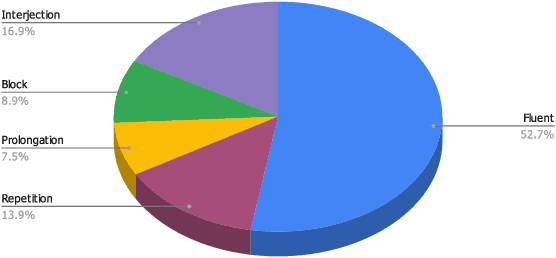

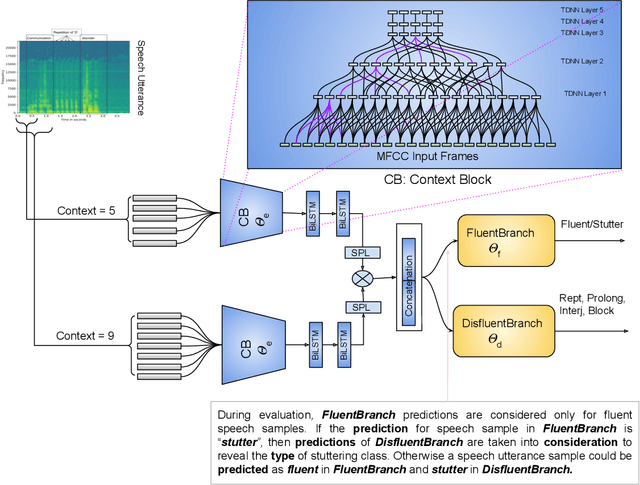
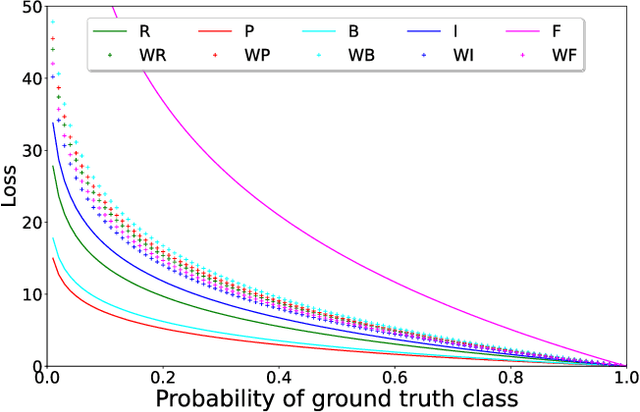
Abstract:Stuttering is a neuro-developmental speech impairment characterized by uncontrolled utterances (interjections) and core behaviors (blocks, repetitions, and prolongations), and is caused by the failure of speech sensorimotors. Due to its complex nature, stuttering detection (SD) is a difficult task. If detected at an early stage, it could facilitate speech therapists to observe and rectify the speech patterns of persons who stutter (PWS). The stuttered speech of PWS is usually available in limited amounts and is highly imbalanced. To this end, we address the class imbalance problem in the SD domain via a multibranching (MB) scheme and by weighting the contribution of classes in the overall loss function, resulting in a huge improvement in stuttering classes on the SEP-28k dataset over the baseline (StutterNet). To tackle data scarcity, we investigate the effectiveness of data augmentation on top of a multi-branched training scheme. The augmented training outperforms the MB StutterNet (clean) by a relative margin of 4.18% in macro F1-score (F1). In addition, we propose a multi-contextual (MC) StutterNet, which exploits different contexts of the stuttered speech, resulting in an overall improvement of 4.48% in F 1 over the single context based MB StutterNet. Finally, we have shown that applying data augmentation in the cross-corpora scenario can improve the overall SD performance by a relative margin of 13.23% in F1 over the clean training.
End-to-End and Self-Supervised Learning for ComParE 2022 Stuttering Sub-Challenge
Jul 20, 2022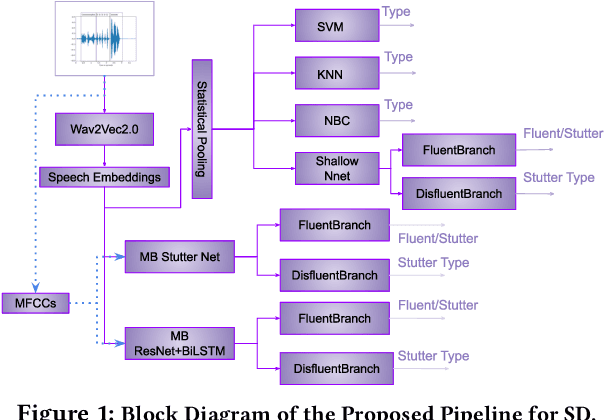

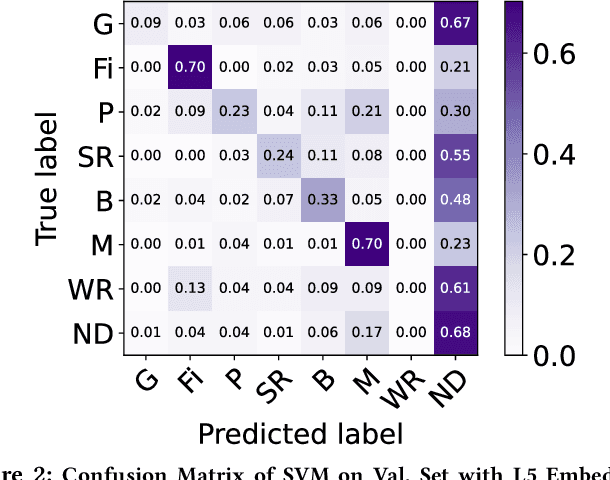
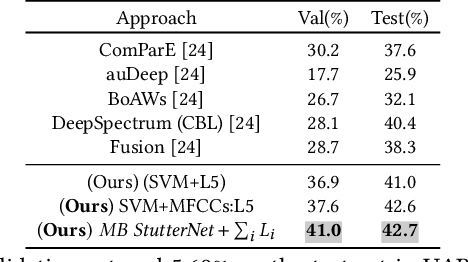
Abstract:In this paper, we present end-to-end and speech embedding based systems trained in a self-supervised fashion to participate in the ACM Multimedia 2022 ComParE Challenge, specifically the stuttering sub-challenge. In particular, we exploit the embeddings from the pre-trained Wav2Vec2.0 model for stuttering detection (SD) on the KSoF dataset. After embedding extraction, we benchmark with several methods for SD. Our proposed self-supervised based SD system achieves a UAR of 36.9% and 41.0% on validation and test sets respectively, which is 31.32% (validation set) and 1.49% (test set) higher than the best (DeepSpectrum) challenge baseline (CBL). Moreover, we show that concatenating layer embeddings with Mel-frequency cepstral coefficients (MFCCs) features further improves the UAR of 33.81% and 5.45% on validation and test sets respectively over the CBL. Finally, we demonstrate that the summing information across all the layers of Wav2Vec2.0 surpasses the CBL by a relative margin of 45.91% and 5.69% on validation and test sets respectively. Grand-challenge: Computational Paralinguistics ChallengE
Robust Stuttering Detection via Multi-task and Adversarial Learning
Apr 04, 2022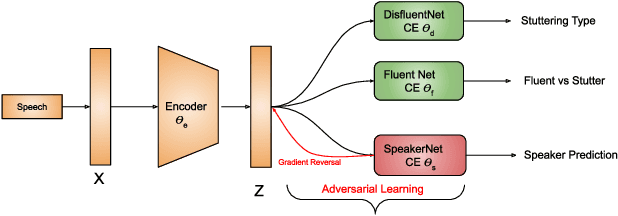
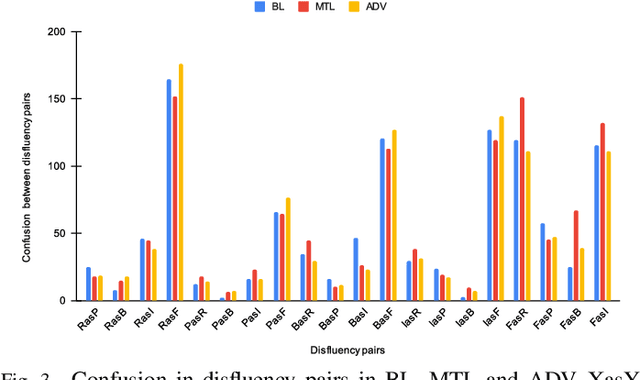
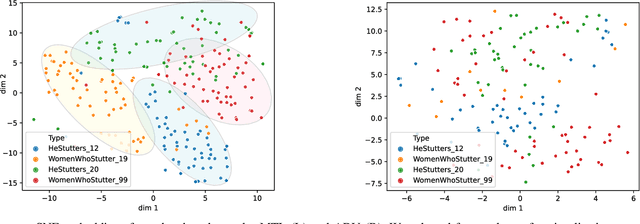
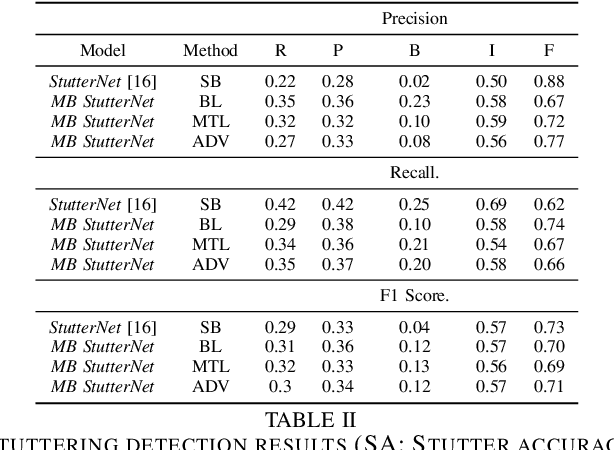
Abstract:By automatic detection and identification of stuttering, speech pathologists can track the progression of disfluencies of persons who stutter (PWS). In this paper, we investigate the impact of multi-task (MTL) and adversarial learning (ADV) to learn robust stutter features. This is the first-ever preliminary study where MTL and ADV have been employed in stuttering identification (SI). We evaluate our system on the SEP-28k stuttering dataset consisting of 20 hours (approx) of data from 385 podcasts. Our methods show promising results and outperform the baseline in various disfluency classes. We achieve up to 10%, 6.78%, and 2% improvement in repetitions, blocks, and interjections respectively over the baseline.
Introducing ECAPA-TDNN and Wav2Vec2.0 Embeddings to Stuttering Detection
Apr 04, 2022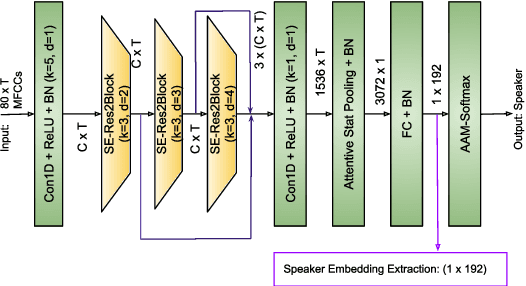
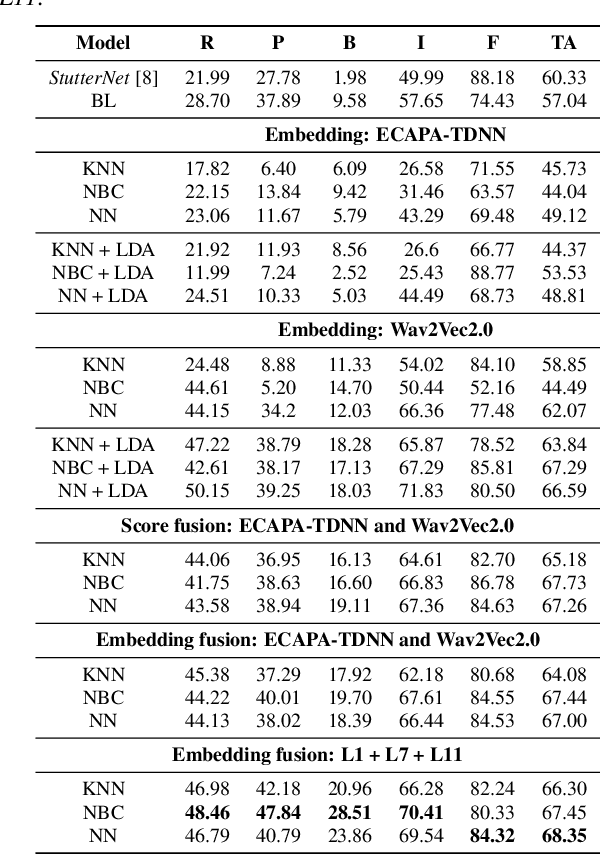
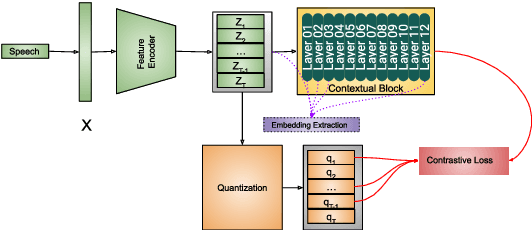

Abstract:The adoption of advanced deep learning (DL) architecture in stuttering detection (SD) tasks is challenging due to the limited size of the available datasets. To this end, this work introduces the application of speech embeddings extracted with pre-trained deep models trained on massive audio datasets for different tasks. In particular, we explore audio representations obtained using emphasized channel attention, propagation, and aggregation-time-delay neural network (ECAPA-TDNN) and Wav2Vec2.0 model trained on VoxCeleb and LibriSpeech datasets respectively. After extracting the embeddings, we benchmark with several traditional classifiers, such as a k-nearest neighbor, Gaussian naive Bayes, and neural network, for the stuttering detection tasks. In comparison to the standard SD system trained only on the limited SEP-28k dataset, we obtain a relative improvement of 16.74% in terms of overall accuracy over baseline. Finally, we have shown that combining two embeddings and concatenating multiple layers of Wav2Vec2.0 can further improve SD performance up to 1% and 2.64% respectively.
Machine Learning for Stuttering Identification: Review, Challenges & Future Directions
Jul 12, 2021
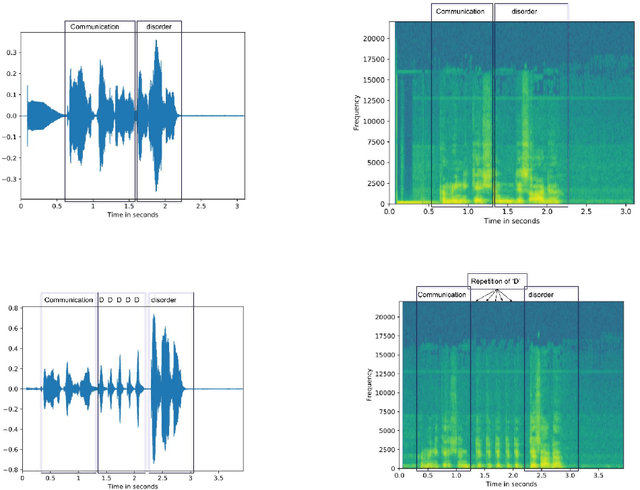
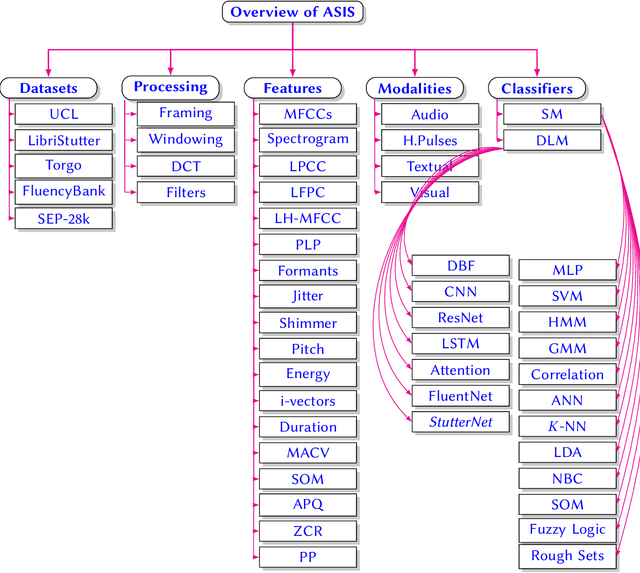
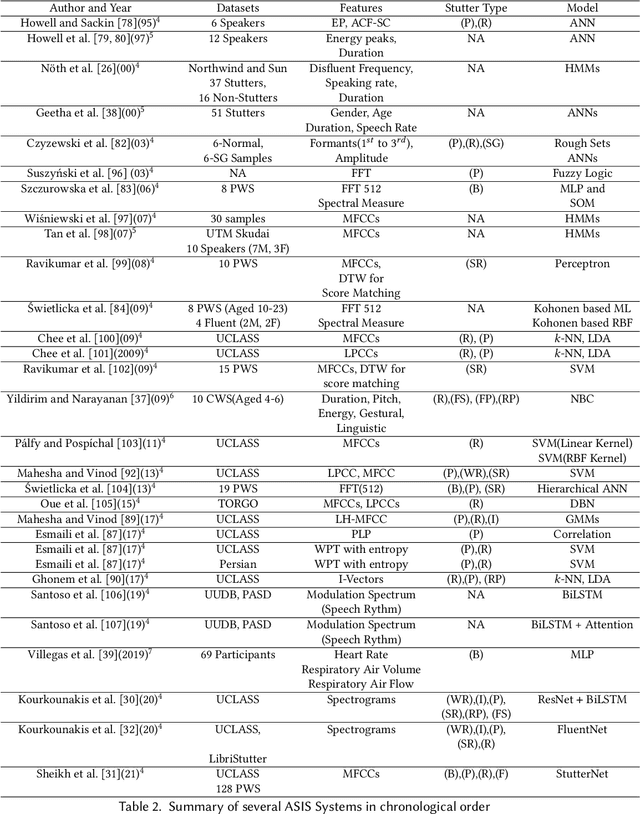
Abstract:Stuttering is a speech disorder during which the flow of speech is interrupted by involuntary pauses and repetition of sounds. Stuttering identification is an interesting interdisciplinary domain research problem which involves pathology, psychology, acoustics, and signal processing that makes it hard and complicated to detect. Recent developments in machine and deep learning have dramatically revolutionized speech domain, however minimal attention has been given to stuttering identification. This work fills the gap by trying to bring researchers together from interdisciplinary fields. In this paper, we review comprehensively acoustic features, statistical and deep learning based stuttering/disfluency classification methods. We also present several challenges and possible future directions.
StutterNet: Stuttering Detection Using Time Delay Neural Network
Jun 08, 2021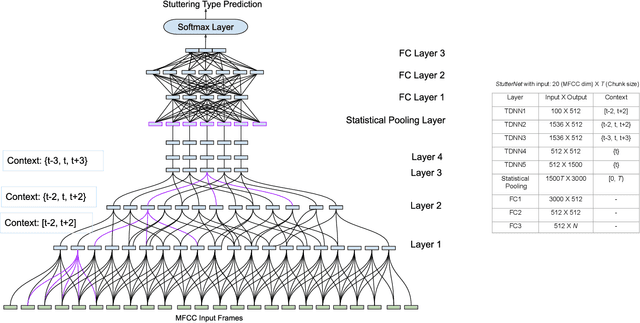
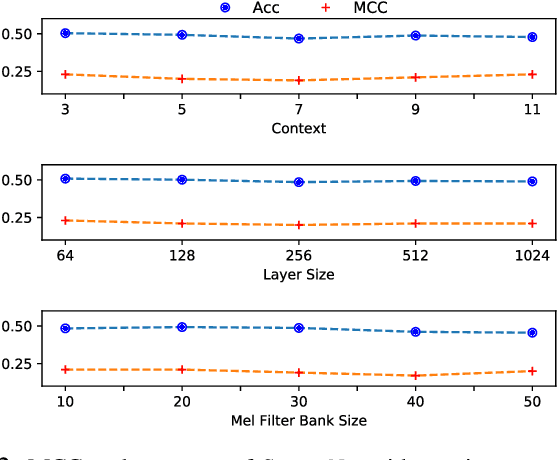
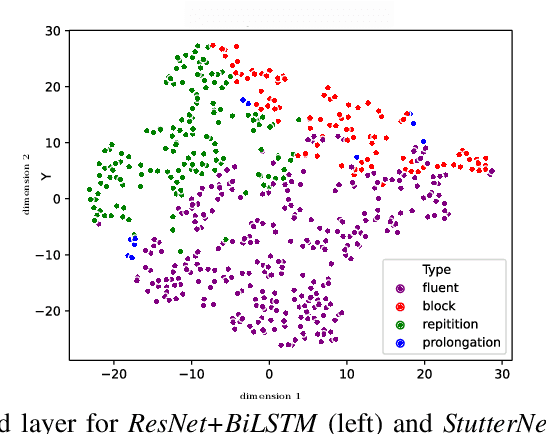

Abstract:This paper introduces StutterNet, a novel deep learning based stuttering detection capable of detecting and identifying various types of disfluencies. Most of the existing work in this domain uses automatic speech recognition (ASR) combined with language models for stuttering detection. Compared to the existing work, which depends on the ASR module, our method relies solely on the acoustic signal. We use a time-delay neural network (TDNN) suitable for capturing contextual aspects of the disfluent utterances. We evaluate our system on the UCLASS stuttering dataset consisting of more than 100 speakers. Our method achieves promising results and outperforms the state-of-the-art residual neural network based method. The number of trainable parameters of the proposed method is also substantially less due to the parameter sharing scheme of TDNN.
 Add to Chrome
Add to Chrome Add to Firefox
Add to Firefox Add to Edge
Add to Edge